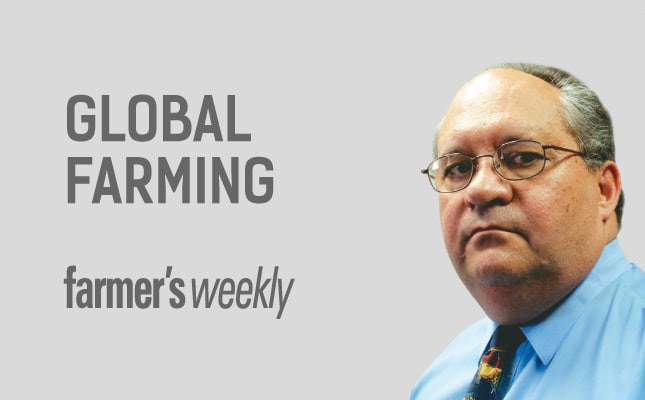
Last year, the Bureau for Food and Agricultural Policy (BFAP) presented a fairly positive baseline outlook for agriculture. This year, its outlook is considerably more subdued. Data supplied by the advertising industry shows that the average monthly household income increased from R6 928 in 2009 to R10 525 in 2014. This is a 22% real increase in income.
In 2009, a total of 56% of households earned less than R5 000/month. This had decreased to 40% by 2014 and will continue to do so. South Africa’s population is growing more urbanised – more than 50% of our population already lives in urban areas.
From 2009, the total rand value of debt increased by 127%, credit applications increased 102% and the number of credit applications rejected increased to more than 50%.
Global economic growth of 3,3% is expected for 2015, with accelerated growth expected for developed countries and less robust growth for developing countries. Over the baseline period (2015 to 2024), the Chinese economy is expected to grow by 5% per year, down from the 9,5% per year achieved from 2005 to 2014. Despite accelerating in developed economies, growth will generally remain below 2%.
While developing countries such as India, China and even Zambia, Tanzania and Nigeria are expected to grow by 6%+ per year, South Africa’s economy will probably grow by about 2%/year.
Net farm income at 15-year high
The highest stock levels in 85 years will probably keep oil prices at current levels. However, the benefit of lower oil prices is largely negated by the strengthening dollar. Slow economic growth will lead to slower demand growth than in the past. The rate at which the distribution of the population changes is also slowing down, further limiting the growth of food demand over the baseline period.
Last year was a good one for South African agriculture, with the highest real net farm income recorded since 2000.
Internationally, good harvests and high stock levels resulted in lower field crop prices. In South Africa, the much lower 2015 maize crop resulted in a decrease in income from field crops. This is projected to result in a decrease in the total national net farm income of 16%.
Assuming normal conditions, net farm income is expected to remain under pressure over the rest of the baseline period.
The outlook for the livestock sectors is better, given the more favourable feed prices and continued increase in per capita protein consumption. The weaker rand will also benefit the horticultural sectors.
Field crops
The area planted to yellow maize is expected to exceed that planted to white maize by 2021, as the demand for feed grain increases. In 2015, the area planted to soya beans increased sharply. This trend will probably continue, encouraged by the
increase in local crushing capacity. Canola production will increase, partially at the expense of wheat production.
The maize price is expected to decrease from 2015 to 2016 and may increase slowly during the rest of the baseline period.
International wheat prices should remain steady during the period to 2024. The SA wheat price will stay close to the import parity level.
Livestock
Population growth, urbanisation and a change in income distribution of South Africa’s population saw increased demand for protein foods over the past decade. This was largely dominated by growth in chicken consumption. Internationally, the commodity cycle became favourable for livestock producers in 2014. Unfortunately, SA livestock product producers did not share in this, as local grain prices were affected by a weak rand and drought early in 2015.
As South Africa is a net importer of meat products, local prices will tend nearer to import parity levels; as local production expands, imports of most meat products will decrease. Poultry imports will continue at high levels as the difference in demand for the different poultry cuts, especially between South Africa and the US, will remain.
Summary
Weaker international product prices will affect SA agriculture. Relatively low grain prices will limit income growth. The livestock sector is slightly better off – lower grain prices will boost its income levels. While the weaker rand benefits exporting and import-vulnerable industries, it limits income growth through higher input prices. The rapid increase in global prices during the past two years will not continue, but the fundamental drivers of agricultural demand remain positive.
Dr Koos Coetzee is an agricultural economist at the MPO.



